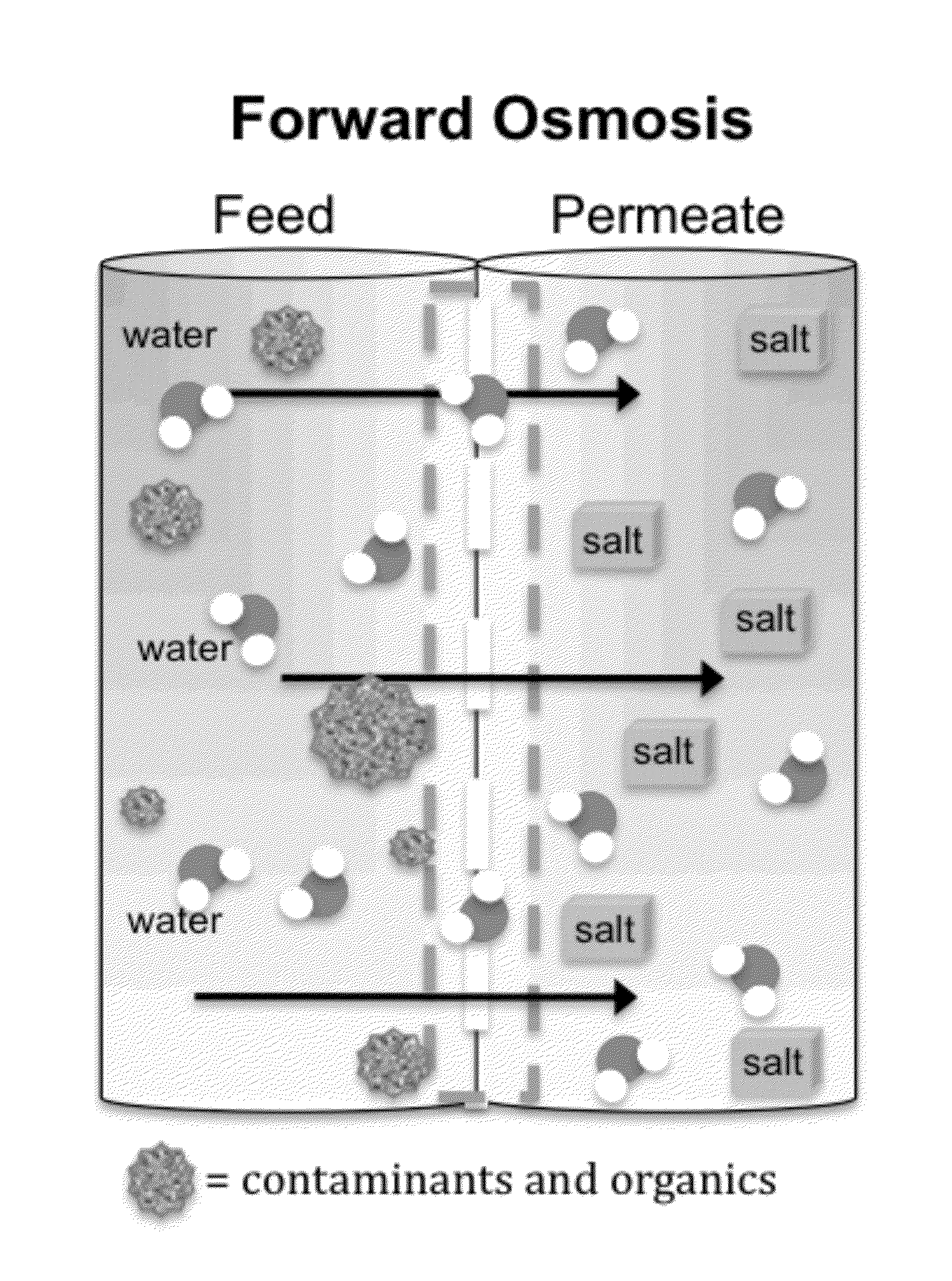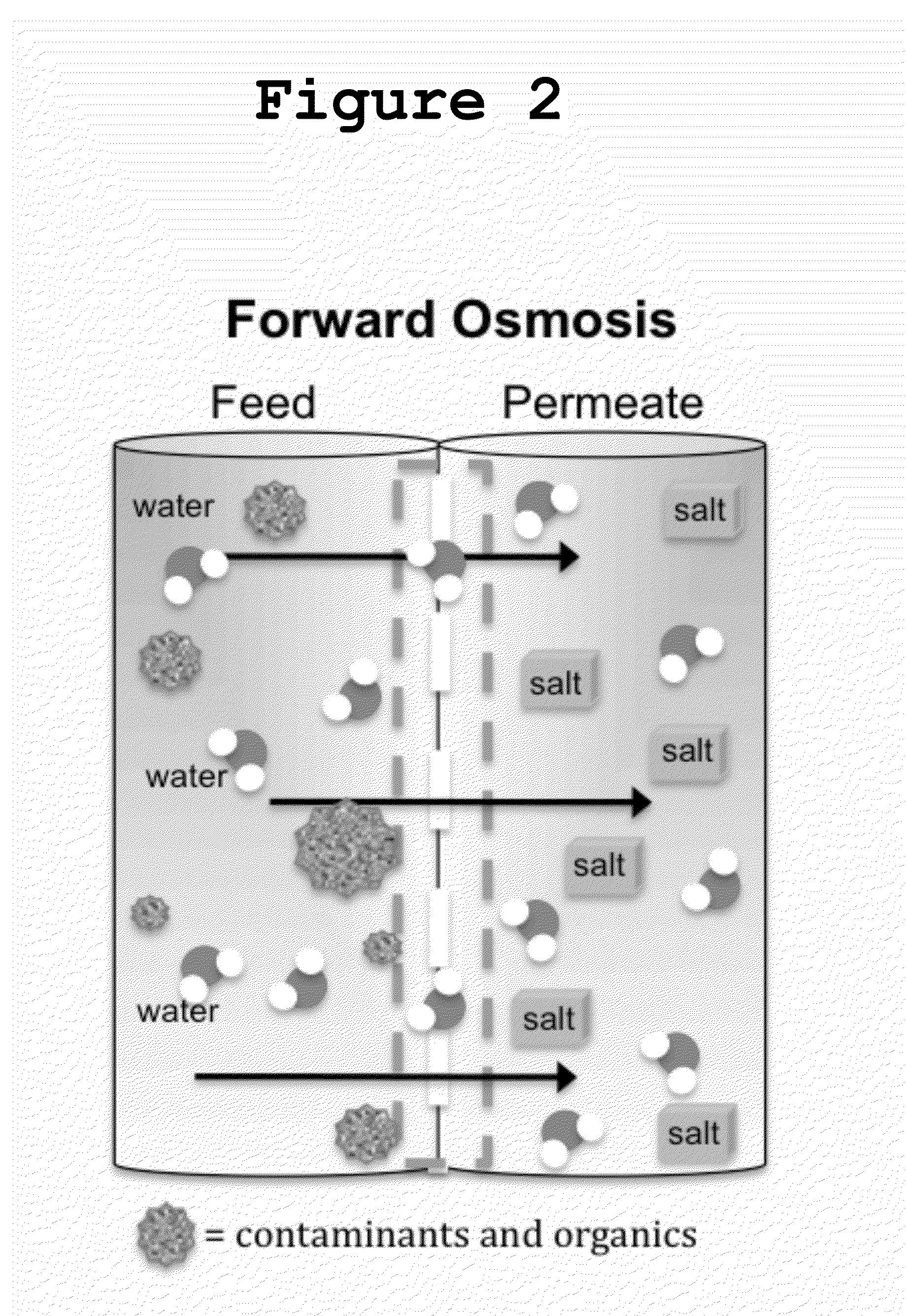Urea-based system for energy and waste recovery in water recycling
a technology of energy and waste recovery and water recycling, which is applied in the direction of filtration separation, multi-stage water/sewage treatment, separation process, etc., can solve the problems of limited access to clean water, limited state-of-the-art water recovery system on iss, and limited treatment of urine and condensa
- Summary
- Abstract
- Description
- Claims
- Application Information
AI Technical Summary
Benefits of technology
Problems solved by technology
Method used
Image
Examples
Embodiment Construction
[0034]The present invention proposes an interface of a FO system along with a bioreactor and an electrochemical cell, designed to treat human wastewater generated inboard long duration human spacecraft. The urea bioreactor / electrochemical system (UBE) externally interfaced to a FO system (FO-UBE) is shown in FIG. 4 and FIG. 9. One key element of the FOBE is a direct alkaline ammonia fuel cell (DAAFC). This DAAFC is the element where the ammonia from the bioreactor will be electrooxidized to generate electrical current.
[0035]The UBE of the present invention consists of a two-step process where urea / urine is allowed to react with granulated activated carbon with previously immobilized urease (GAC-urease), while the product of the enzymatic reaction is electrochemically oxidized at the interface of a platinized boron-doped diamond electrode to generate current. Urease (EC 3.5.1.5, urea amidohydrolase) is a nickel metalloenzyme that catalyzes the hydrolysis of urea to produce two moles ...
PUM
| Property | Measurement | Unit |
|---|---|---|
| Current | aaaaa | aaaaa |
| Energy | aaaaa | aaaaa |
Abstract
Description
Claims
Application Information
 Login to View More
Login to View More - R&D
- Intellectual Property
- Life Sciences
- Materials
- Tech Scout
- Unparalleled Data Quality
- Higher Quality Content
- 60% Fewer Hallucinations
Browse by: Latest US Patents, China's latest patents, Technical Efficacy Thesaurus, Application Domain, Technology Topic, Popular Technical Reports.
© 2025 PatSnap. All rights reserved.Legal|Privacy policy|Modern Slavery Act Transparency Statement|Sitemap|About US| Contact US: help@patsnap.com



